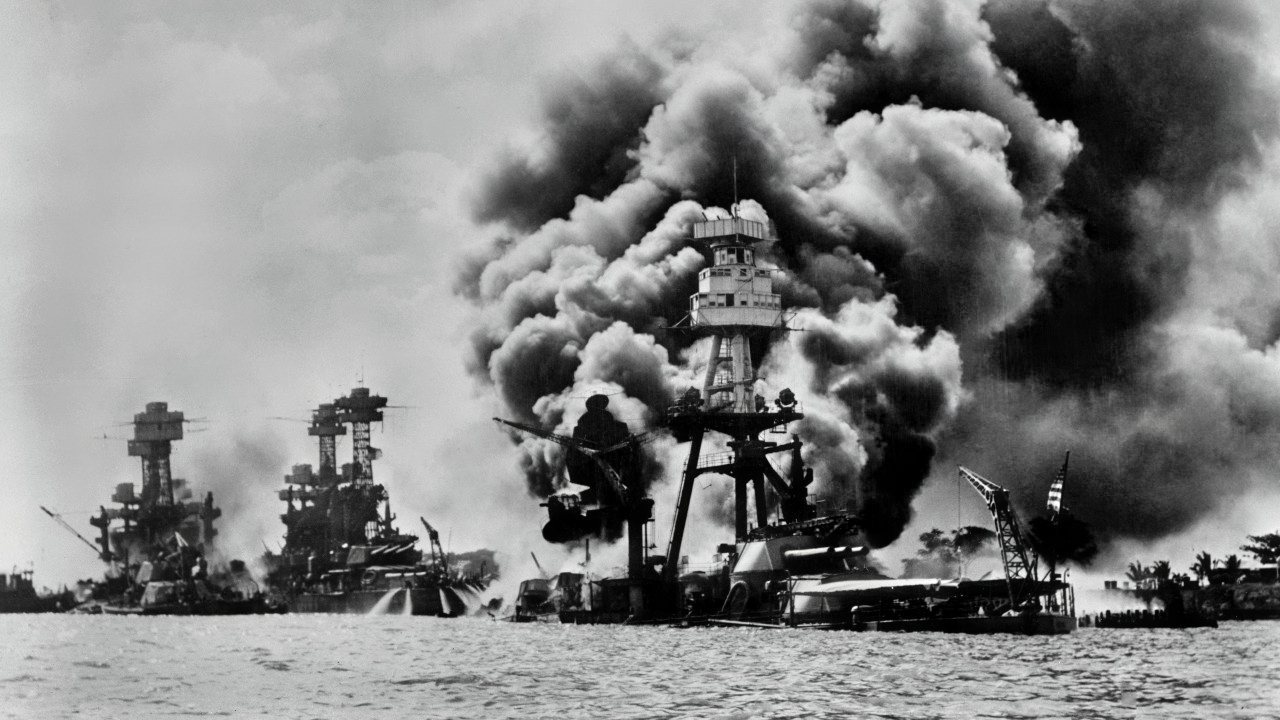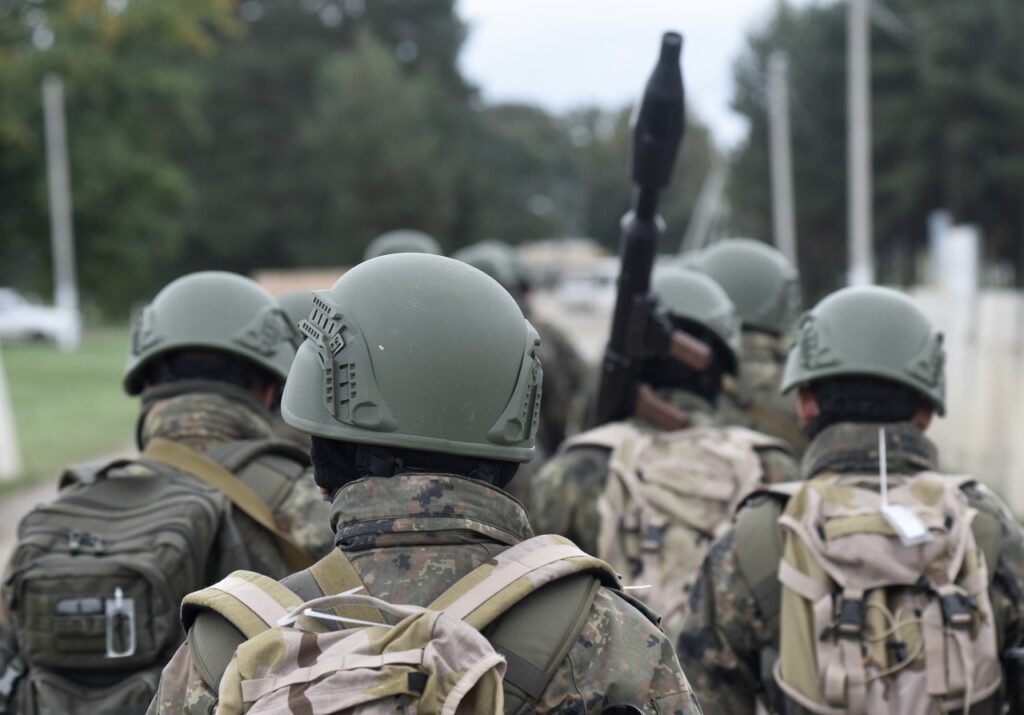
The USS Ward Was the First Warship to Draw Blood at Pearl Harbor
This past Saturday, December 7, 2024, marked the eighty-third anniversary of the “date which will live in infamy,” the Imperial Japanese Navy’s (IJN) surprise attack on the U.S. Navy (USN) base at Pearl Harbor, the catalyst for the entry of the United States of America into World War II.
What’s well known is that Pearl Habor was a victory for the Japanese (though, needless to say, they would end up losing the war), sinking four USN battleships (five if you count the USS Utah, which had been converted into a target ship) and destroying 188 aircraft. 2,403 Americans were also killed (the majority of whom lost their lives on the USS Arizona), in exchange for the loss of twenty-nine planes, five midget submarines sunk or grounded, and at least fifty-five men killed in action (KIA).
What’s not as well known (at least not to those who aren’t hardcore history buffs) is that it was actually the USN that drew first blood in the battle, thanks to the destroyer USS Ward (DD-139; later APD-16).
USS Ward Initial History and Specifications
The Ward was a Wickes-class destroyer, named for Commander James Harmon Ward, the first U.S. Navy officer to be KIA during the American Civil War. She was laid down on May 15, 1918, launched on June 1, 1918, and commissioned on July 24, 1918. USS Ward had a displacement of 1,267 tons; a hull length of 214 feet 4 inches; a beam width of 30 feet 11 inches; a draft of 9 feet 10 inches (3.0 meters); a propulsion system based on two geared steam turbines and two shafts; and a max speed of 35 knots (40 mph; 65 km/h). Regarding its crew, the Ward hosted 231 commissioned officers and enlisted sailors. In terms of armament, it was armed with four 4-inch (102mm)/50 caliber main guns; two 3-inch (76mm)/23 caliber antiaircraft guns; and twelve 21-inch (533 mm) torpedo tubes.
Ward was actually decommissioned on July 21, 1921, but then recommissioned on January 15, 1941—not quite eleven months before her date with destiny.
First Shots, First Blood: The Incident
That fateful Sunday morning, USS Ward was skippered by then-Lieutenant (eventual retired rear admiral) William Woodward Outerbridge.
At 3:58 am local time (3 hours and 57 minutes before the Japanese officially initiated their attack), the minesweeper USS Condor (AMc-14) signaled to Ward that an object resembling a submarine had been spotted. Outerbridge immediately called general quarters (i.e., battle stations) and began “pinging,” which proved to be fruitless.
Finally, at about 6:30 am, the submarine was spotted by a PBY Catalina floatplane. The enemy sub was targeting a repair ship, USS Antares (AG-10; later AKS-3), which also spotted the submersible. Ward finally spotted the enemy boat and began bearing down on her at a speed of 25 knots. As Ward closed within 500 yards, she commenced firing with her 4-inch main guns and scored a direct hit on the midget sub, which heeled over and began sinking. As a coup de grace, Ward dropped four depth charges. The crewmen of both Ward and Antares were able to observe the oil slick from the stricken No. 20.
The IJN mini-sub in question was No. 20 of the Ko-hyoteki (literally “Target A” or “Type A”) class, which had a two-man crew that consisted of a junior commissioned officer—typically an ensign (kaigun-shoi) or a sub-lieutenant (kaigun-chui)—who commanded the vessel while a petty officer manipulated valves and moved ballast to control trim and diving. These bite-sized boats were armed with two muzzle-loaded 450mm (17.7-inch) torpedoes.
So then, why were the Japanese aviators still able to attain complete surprise roughly ninety minutes later? Simply put, hubris and complacency on the part of Pearl Harbor’s commanding officer, Admiral Husband Edward Kimmel. Though Kimmel received the news of the sinking at 0730L, he decided not to act upon it due to previous reports that had turned out to be false alerts. He didn’t even bother notifying the Army (who, for its part, ended up losing 208 KIA out of that aforementioned death toll of 2,403).
Where Are They Now?
Type A submarine No. 20 had sunk in 1,312 feet (400 meters) of water roughly five miles outside of Pearl Harbor; her wreck was discovered in August 2002 and raised on December 7, 2016, the seventy-fifth anniversary of the sinking.
How’s this for a tragically ironic twist of fate? According to Naval History and Heritage Command:
“Converted to a high-speed transport, she was redesignated APD-16 in February 1943 and was sent for war service again in the Pacific. During the landings at Ormoc Bay on December 7, 1944, Japanese aircraft, along with a suicide bomber, attacked Ward, damaging her to the point of abandoning ship. She was sunk by gunfire by USS O’Brien (DD-725), commanded by Commander William W. Outerbridge, who had commanded Ward during the attack on Pearl Harbor three years prior.”
Fast-forward to December 5, 2017 (two days shy of the seventy-sixth anniversary of the raid), and it was announced that the wreckage of the valiant little “tin can” (an affectionate slang term for destroyers) had finally been found near Ponsol Island in the Philippines, in 686 feet (209 meters) of water. The research vessel that found her, RV Petrel, had also located the star-crossed heavy cruiser USS Indianapolis (CA-35) in August of that same year.
About the Author: Christian D. Orr
Christian D. Orr is a Senior Defense Editor for National Security Journal (NSJ). He is a former Air Force Security Forces officer, Federal law enforcement officer, and private military contractor (with assignments worked in Iraq, the United Arab Emirates, Kosovo, Japan, Germany, and the Pentagon). Chris holds a B.A. in International Relations from the University of Southern California (USC) and an M.A. in Intelligence Studies (concentration in Terrorism Studies) from American Military University (AMU). He has also been published in The Daily Torch, The Journal of Intelligence and Cyber Security, and Simple Flying. Last but not least, he is a Companion of the Order of the Naval Order of the United States (NOUS).


